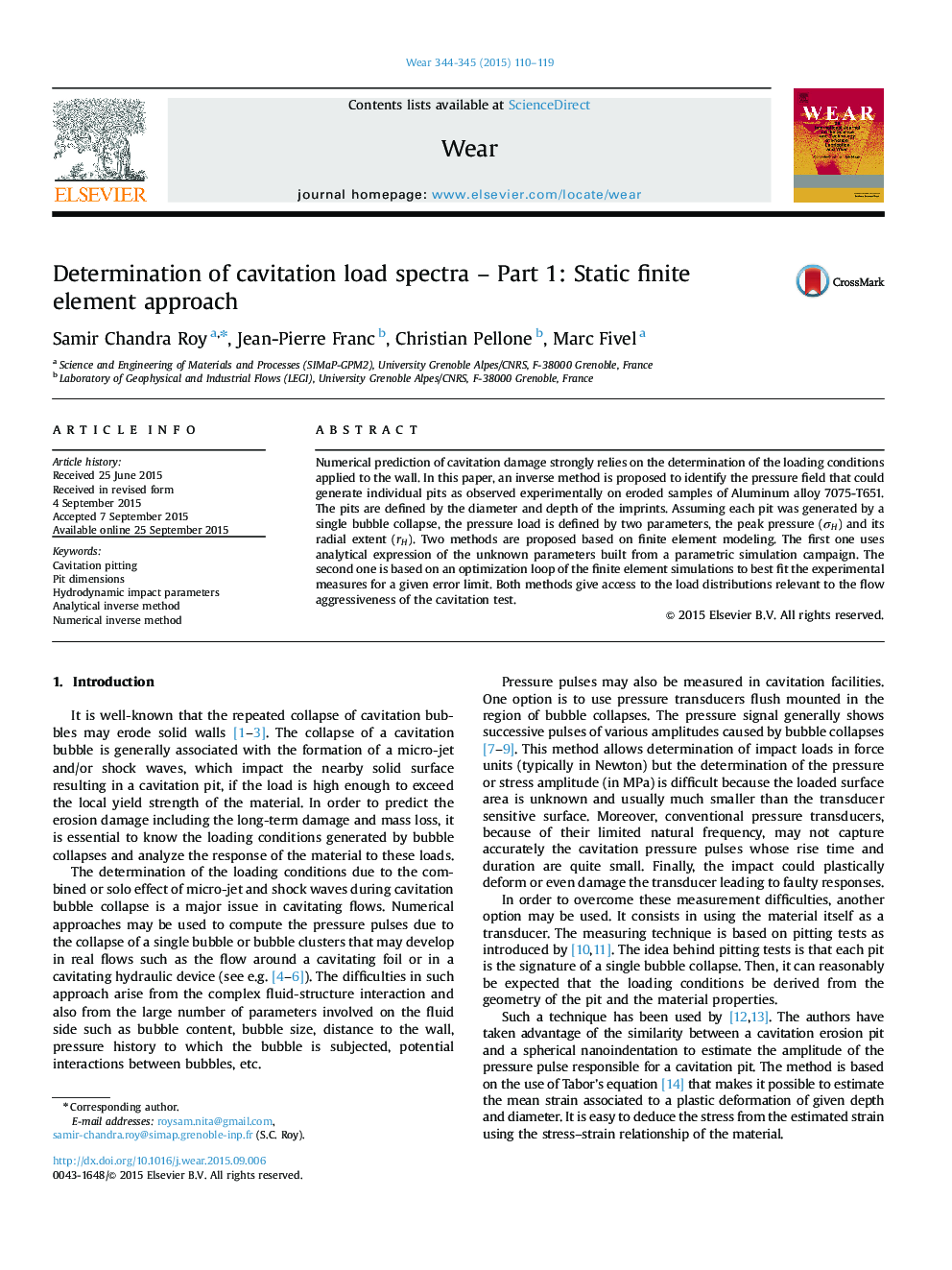| Article ID | Journal | Published Year | Pages | File Type |
|---|---|---|---|---|
| 617059 | Wear | 2015 | 10 Pages |
Abstract
Numerical prediction of cavitation damage strongly relies on the determination of the loading conditions applied to the wall. In this paper, an inverse method is proposed to identify the pressure field that could generate individual pits as observed experimentally on eroded samples of Aluminum alloy 7075-T651. The pits are defined by the diameter and depth of the imprints. Assuming each pit was generated by a single bubble collapse, the pressure load is defined by two parameters, the peak pressure (ÏH) and its radial extent (rH). Two methods are proposed based on finite element modeling. The first one uses analytical expression of the unknown parameters built from a parametric simulation campaign. The second one is based on an optimization loop of the finite element simulations to best fit the experimental measures for a given error limit. Both methods give access to the load distributions relevant to the flow aggressiveness of the cavitation test.
Keywords
Related Topics
Physical Sciences and Engineering
Chemical Engineering
Colloid and Surface Chemistry
Authors
Samir Chandra Roy, Jean-Pierre Franc, Christian Pellone, Marc Fivel,
